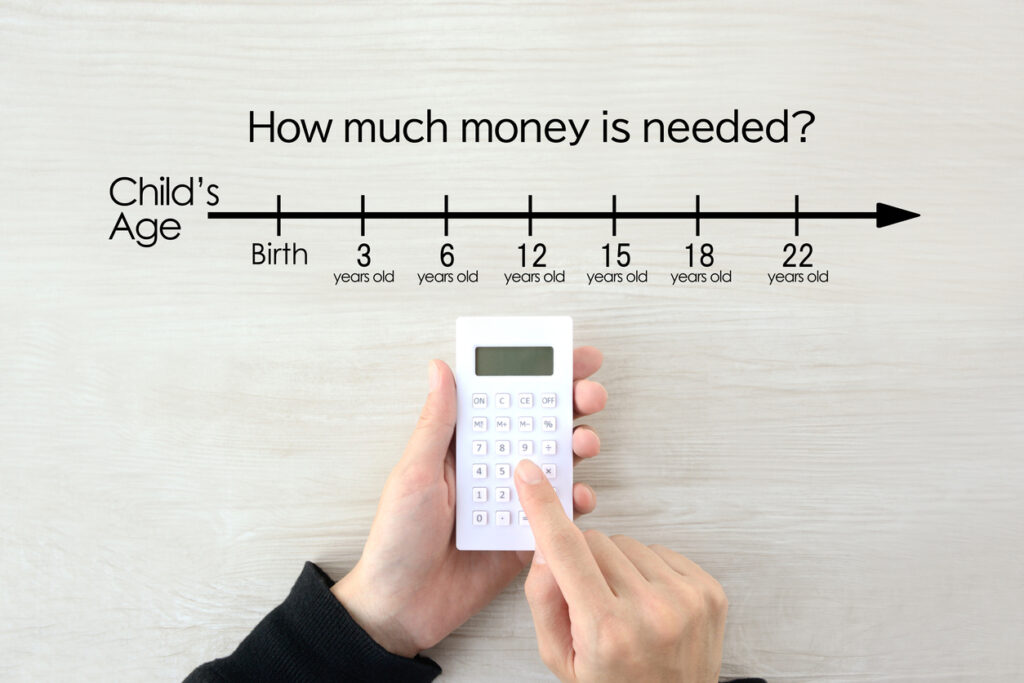In the realm of family law, child support calculation in Iowa is one of the most contested and consequential processes parents may encounter. While the intention behind child support is straightforward—ensuring the child’s financial needs are met post-separation—the actual calculation can be anything but simple. With legal nuances, statutory guidelines, and varying parental circumstances all in play, many parents find themselves overwhelmed. This guide breaks down the entire process into manageable stages to offer clarity and direction.
Understanding the Foundation of Child Support Calculation in Iowa
At the core of child support calculation in Iowa lies the Iowa Child Support Guidelines, a legal framework that standardizes how much support one parent should pay to the other. These guidelines are based on the concept of “income shares,” which assumes that children are entitled to the same proportion of parental income they would have received if the parents lived together. The goal is to fairly divide financial responsibility between both parents.
In practice, calculating support involves reviewing both parties’ incomes, determining deductions, evaluating custody arrangements, and accounting for additional costs such as daycare, health insurance, and educational expenses. The Iowa Supreme Court mandates the use of specific worksheets and formulas that help determine an appropriate support amount while allowing for deviations in certain cases.
Initial Income Assessment: The First Step in Iowa Child Support Calculation
To initiate the child support calculation in Iowa, both parents must disclose their gross monthly incomes. This includes wages, bonuses, commissions, unemployment benefits, pensions, and even rental income. Courts require this transparency to ensure the fairness of the outcome.
Once gross income is established, deductions are applied. These deductions may include pre-existing child support obligations for other children, spousal support, union dues, and other legally allowable deductions. After these are subtracted, the result is each parent’s net income, which forms the basis for support calculations.
Application of the Iowa Child Support Guidelines Chart
The next phase in child support calculation in Iowa is referencing the official Iowa Child Support Guidelines chart. This chart cross-references the combined net incomes of both parents with the number of children requiring support. The chart then provides a presumptive total child support amount, which is divided proportionally between the parents based on their individual share of the total income.
For example, if one parent earns 70% of the combined income, that parent is presumed to be responsible for 70% of the total support obligation, unless adjustments apply. This systematic approach helps remove subjective judgments and ensures consistency across cases.
The Role of Custody in Iowa Child Support Calculations
An essential component influencing child support calculation in Iowa is the physical custody arrangement. Whether one parent has primary custody or parents share joint physical care significantly affects the final numbers.
In sole custody situations, the non-custodial parent usually pays the calculated amount to the custodial parent. In joint physical care scenarios, the calculation is performed twice—once as if each parent were the custodial party. The difference between these two figures becomes the actual amount paid by the higher-earning parent to the other. This dual calculation reflects the shared responsibilities inherent in joint arrangements.
Adjustments for Health Insurance and Childcare Costs
Another crucial layer in child support calculation in Iowa involves costs related to child health insurance, medical expenses, and work-related childcare. If a parent provides health insurance, their portion of the premium specifically allocated to the child is factored into the calculation.
Similarly, necessary childcare costs allow for additional adjustments. These expenses are added to the basic support amount and divided proportionally between both parents. Ensuring a child has access to proper healthcare and safe, reliable childcare is a top priority in the eyes of Iowa courts, which is reflected in how support obligations are computed.
Voluntary vs. Court-Ordered Support Agreements
Parents may reach their own agreement regarding child support, which is then subject to court approval. Even when mutual consent exists, the court will examine whether the agreed amount aligns with the statutory guidelines of child support calculation in Iowa. If it significantly deviates, justification must be provided—such as a higher standard of living already established or unique medical needs of the child.
However, if the court finds the agreement to be insufficient or inequitable, it may adjust the support amount to ensure the child’s best interests remain protected. Legal precedent in Iowa favors consistency with the guideline amount unless compelling reasons are presented for deviation.
Imputed Income: What Happens When a Parent is Underemployed or Unemployed?
A common obstacle during child support calculation in Iowa is when one parent voluntarily remains unemployed or underemployed. In these cases, the court may assign or “impute” an income based on that parent’s employment history, education, and earning capacity.
This ensures fairness and prevents one parent from evading financial responsibility by intentionally reducing income. The imputed income is used in the same way actual income would be, feeding directly into the overall support calculation. The court typically takes a fact-based approach, drawing on historical income and labor market data.
Modifying an Existing Iowa Child Support Order
Child support isn’t static. Over time, circumstances may change—whether due to income shifts, employment changes, remarriage, or the needs of the child evolving. Fortunately, child support calculation in Iowa allows for modification under certain conditions.
To modify a current order, the parent requesting the change must show a “substantial change in circumstances.” This may include a 10% variation in the existing amount, changes in custody, or substantial changes in the child’s needs. The revised support amount is then recalculated using the same income shares model and updated inputs.
Deviation from Guidelines: Exceptional Circumstances
While the child support guidelines offer structure, courts in Iowa recognize that rigid adherence may not always lead to just outcomes. Judges may deviate from the guideline amount if certain conditions exist. These can include extraordinary medical needs, special education costs, or substantial disparities in parental financial situations.
Such deviations must be justified in writing and supported by evidence. The aim remains consistent: upholding the best interests of the child while maintaining equity between parents. Even in deviations, the core principles of child support calculation in Iowa serve as a reference point.
/Filing and Legal Procedure in Iowa Support Cases
The procedural aspects of filing for child support in Iowa include submitting financial affidavits, completing support worksheets, and possibly attending a hearing. In uncontested cases, agreements may be approved without a hearing. However, in disputed cases, the court will review financial disclosures, hear testimony, and issue a support order based on the guidelines and evidence presented.
The state’s judicial website provides many of the required forms, ensuring that the process is accessible.
is a useful external resource for up-to-date forms and instructions.
Enforcement of Child Support Orders in Iowa
Once a support order is in place, enforcement becomes a priority. Iowa’s Child Support Recovery Unit (CSRU) has the authority to collect overdue payments through various means such as wage garnishment, tax refund interception, license suspensions, and even contempt proceedings.
Non-payment of child support is taken seriously, and persistent failure to pay can lead to significant legal consequences. The goal of enforcement mechanisms is not to punish, but to ensure the financial stability and well-being of the child, which remains the centerpiece of child support calculation in Iowa.
Termination of Child Support Obligations
Support obligations generally continue until the child turns 18 or graduates high school—whichever occurs later. However, exceptions exist, such as when a child becomes legally emancipated, joins the military, or marries before reaching 18.
In rare cases, support may be extended beyond legal adulthood if the child is dependent due to disability or other exceptional circumstances. Termination requires filing appropriate paperwork with the court, and sometimes a hearing, to formally end the obligation.
Legal Resources and Support for Iowa Parents
Navigating child support calculation in Iowa is rarely a straightforward task, especially when emotions and legal complexities intersect. Parents are encouraged to utilize available legal resources to ensure accurate and fair outcomes. Local family law self-help centers, court websites, and community legal aid organizations can provide critical guidance.
For those seeking a more comprehensive understanding of the legal structure and practical process, this in-depth guide on how child support is calculated in Iowa offers valuable insights and illustrative examples for parents at every stage of the process.
Final Thoughts on Iowa Child Support Law
Child support plays a pivotal role in safeguarding a child’s standard of living post-divorce or separation. The structured yet adaptable framework of child support calculation in Iowa ensures that both parents contribute fairly while keeping the child’s welfare as the highest priority.
Understanding each stage—from income determination to guideline application and eventual modification—can help reduce conflict and promote compliance. Ultimately, when parents engage constructively and transparently with the process, it’s the child who benefits the most.

